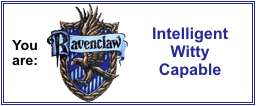 Codex 632 - The Secret Identity of Christopher Columbus
Codex 632 - The Secret Identity of Christopher ColumbusBy Jose Rodrigues Dos Santos
Originally published in Portugal by Gradiva 2005
English translation published by William Morrow 2008
Author's website (in English)
This is a novel. But on the very first page is this Author's Note.
All of the books, documents and manuscripts mentioned in this novel do exist...including Codex 632.
When Tomás Noronha, a professor of History and expert cryptographer, is called upon to finish an unresolved investigation involving an aged scholar who is mysteriously found dead in his hotel room, his life takes several unexpected and dramatic turns. As Tomás slowly begins to unravel the cryptograms and enigmas that shroud the old professor’s work, he finds a code that could possibly change the course of historical scholarship:
MOLOC NINUNDIA OMASTOOS
In his quest to decipher this mysterious code, Tomás travels around the world, from Lisbon to Rio, New York and Jerusalem. He quickly immerses himself in the fascinating history of the discovery of the Americas, and the one enigma that no historian has ever been able to solve: the true identity of Christopher Columbus.
The mystery begins with the great explorer’s name. Columbus never introduced himself as Columbus, but as Colom or Colón. People who knew him personally called him Colom, Colón, Colona or Guerra. But never Columbus. Why, then, do we call him Columbus, a name he never went by?
Tomás finds that one mystery only leads to another. Take Columbus’ language. The great navigator tried only twice to write in Tuscan, and both his efforts are full of Portuguese and Spanish words. Why is that? Being an Italian, could he not write in Tuscan? Columbus wrote some letters to Genoese friends, but, amazingly, these letters were not written in Tuscan or Genoese, as might be expected in letters between Genoese people, but in Spanish.
Now, doesn’t that strike you as a little bit odd? Actually, say the Spanish philologists, it wasn’t really Spanish. It was Portuñol, the hybrid language Portuguese people talk when they try to speak Spanish. (similar in many ways to Yiddish)
Codex 632 tells the true story of a supposed Genoese weaver who left his town at the age of 24 and, yet, could not speak a word of Genoese or Tuscan, and whose Spanish was full of Portuguese words.
Another mystery is Columbus’s marriage. The Genoese Cristoforo Colombo was a poor and ignorant wool weaver, according to reports and documents from that time. And, yet, he supposedly married Dona Filipa Moniz Perestrello, a Portuguese woman from high nobility and related by family ties to the Portuguese crown. And this marriage took place in a 15th century full of class divisions, when social classes behaved like castes, with no intermarriage whatsoever. No noblewomen would ever marry a poor weaver. It was unthinkable. So why did this noblewoman marry this man? The answer could only be that he was not poor, and that he was not Italian.
Another question. Where did the name of Cuba come from? Is it an Italian word?
Is it a Spanish word? What if it is a Portugese name? And if it is a Portugese name - why would an Italian sailor employed by the Spanish crown, ever name a new discovery after a Portugese village?
It is reasonably well known that the Viking sailors and the Irish monks discovered Iceland, Greenland and Canada way back in the mists of time. The Chinese may also have discovered other continents and even mapped them. So in 1492, Columbus really did not discover America. He Re-Discovered America.
There are so many questions provided by history, and so many answers not being delivered by historians....Until now.
This was an excellent novel based on facts and real documents. exactly the kind of novel I like. I thoroughly enjoyed it and I could not put it down.









No comments:
Post a Comment